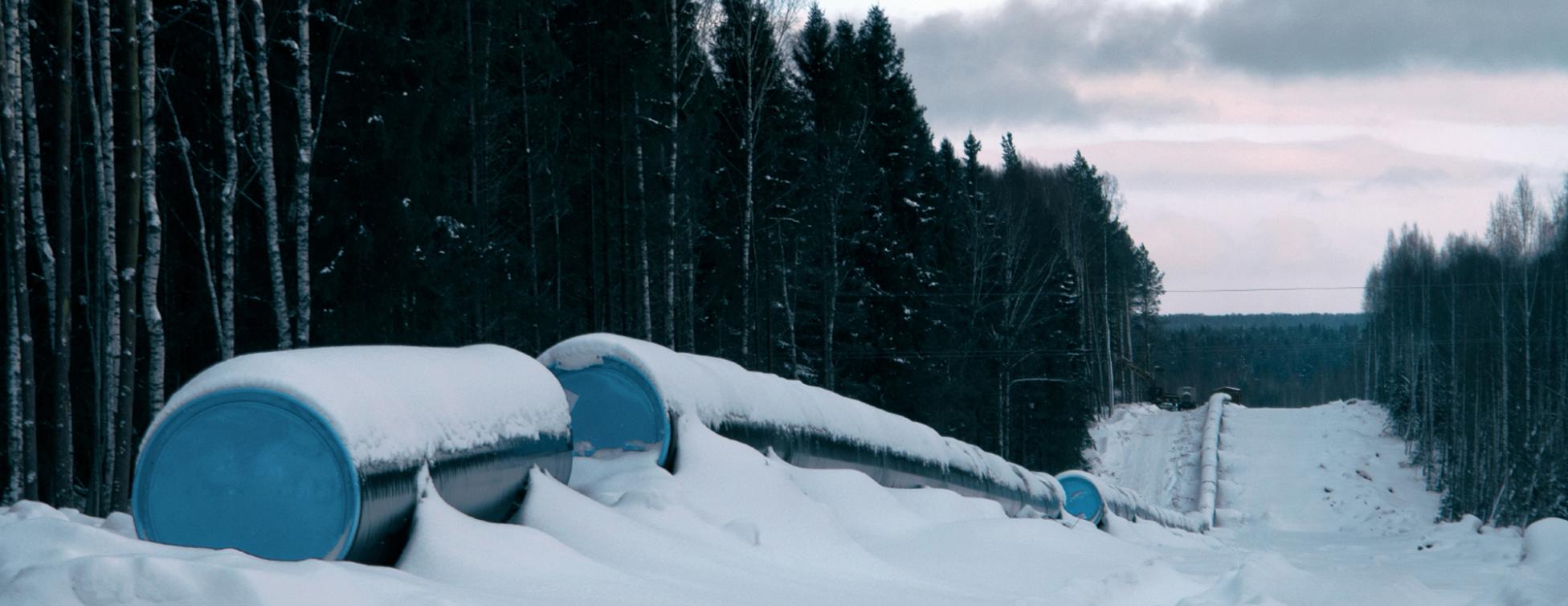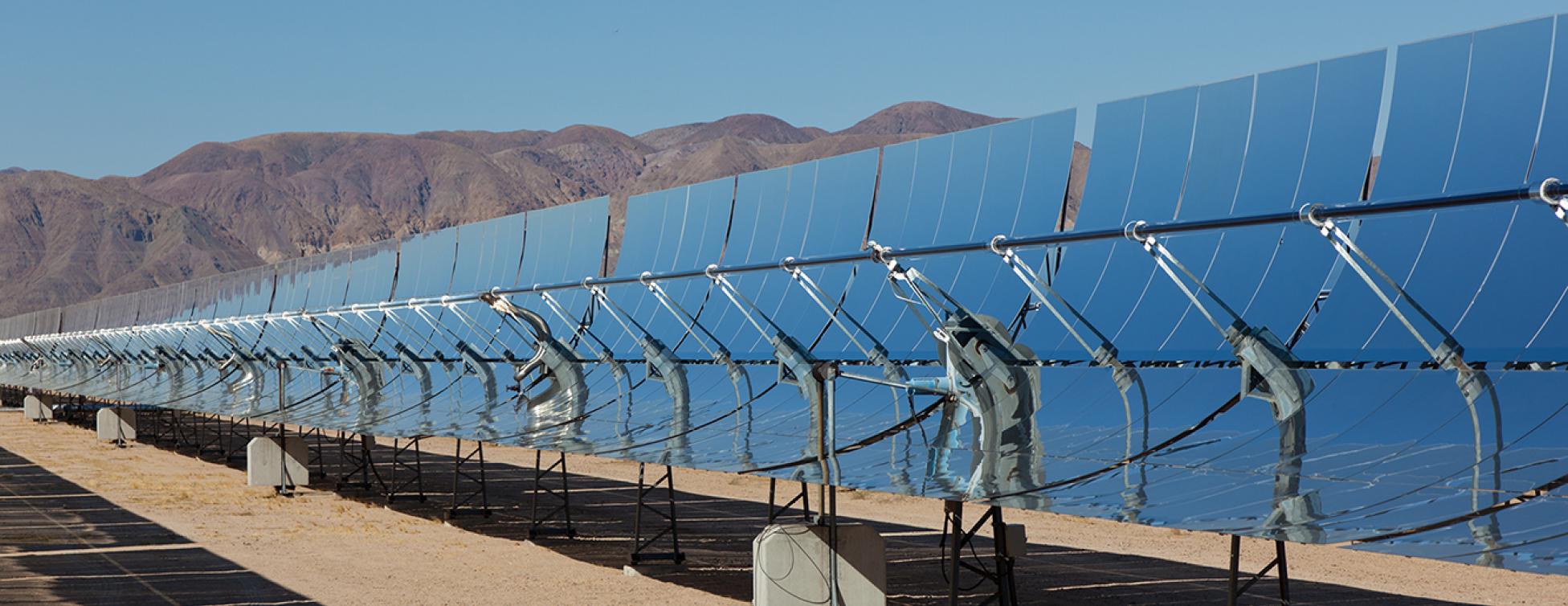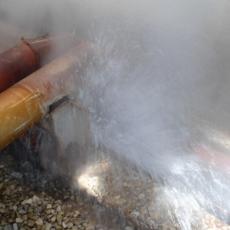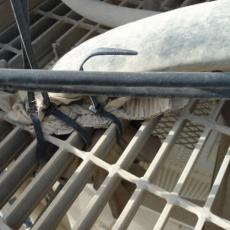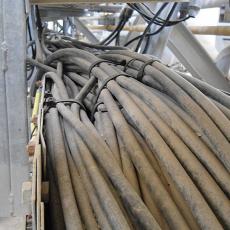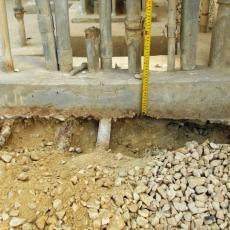October 2019
"Old School" Steam Drains
Keep in mind, this is a new plant in operation about one year, in a location where quality plants are built routinely... Yes, this is a NEW plant built to contemporary codes and standards by a large international EPC contractor.
During EPR's review of the Facility, this system is perhaps the single most compelling example of inferior design in the plant. While not the most cost intensive, the effects are broad reaching. The open trench design belches hot condensate on steel, electrical hardware, and other equipment leaving the plant to look ready for decommissioning. O&M personnel are left to perhaps unknowingly assume that facility condition is not important to the owners; how could it be, look at this? In so many ways this is not consistent with the Facility purchased.
The condensate collection system of trenches and transfer sumps has experienced critical deterioration. Serious failures in the concrete infrastructure include trench through-cracks, cementitious erosion, advanced concrete spalling and scaling, sub-grade undermining, differential settlement, and accelerated... Read more
Perhaps $500k.
Unknowable, but very significant. Violates Environmental permit, among other problems.
CEMS Tubing Damage
At a multi-unit facility, it was observed that most of the certified emissions monitoring system sample tubing heating circuits indicated open continuity. The heating circuits are important to maintain transported sample temperature needed for CEMS accuracy (emissions compliance).
After a brief investigation it became clear that the installation was performed by construction personnel that did not understand the sensitive nature of the tubing assemblies.
Engineering properly cascaded the OEM requirements of not less than a 20.5 inch bend radius into the construction drawings. The OEM information was also available to the Contractor staff. However, the sample tubing was observed to be strained by being conformed to tight radius cable tray, pulled taught over edges of grating, and in some cases poorly tied with nylon ties that broke leaving the tubing to move with the wind.
All these visible defects were in addition to the probability that the equipment was mishandled during installation. All of the sample lines at each CEMS installation have bend radius below 20.5 inches in... Read more
Minimal to no cost savings by performing an unsupervised installation.
Owner: Difficulty with CEMS certification and continued compliance. Contractor: $50,000/unit to replace.
Tray Fill
While the subject of this post is specifically cable tray fill, the volume of defects is almost limitless in the photos. As a side note, these are new plants and, in some cases, not to COD.
To start, cable trays are usually limited to 40% of cross-sectional area as the maximum allowable cable fill. There are exceptions to this requirement, but those exceptions did not pertain to the subject plants. There are heat dissipation and overloading concerns with trays that have excess fill.
In one of the plants indicated in these photos a 5kV cable tray collapsed during final stretch of commissioning a power block which caused a 3-4 months setback to the block COD schedule. This is a real example where excess load played a factor in a materially costly event.
In addition, the photos show instances where supports are also missing according to NEMA VE-2, which compounds an overloading condition. Further, there are cables hanging over tray rails, missing and defective grounding, bent and sagging tray rungs, no voltage separation, cable transitions with no drop-out fittings, no code... Read more
Minimal cost but takes some planning and trained crews.
In many cases this condition cannot be repaired short of removing all the cables and starting over.
Faked Electrical Ductbank
There are several important reasons to concrete encase underground raceway (rigid and PVC conduit) that carry power and control cables.
At a newly completed powerplant, the EPC Contract clearly stated: “All underground cables are installed in underground duct bank consisting of concrete encased duct: Hard polyethylene or rigid galvanized steel conduits as per ANSI C 80.1.” It goes further with detail but does not allow direct bury cables and articulates a minimum depth of cover. Engineering understood the implications and cascaded the contract/code requirements into the construction drawing details, which were available to the construction team.
Upon casual observation, the ductbank risers (concrete exposed above grade) did not appear "correct". Detailed investigation revealed there was effectively no ductbank. In some cases, rigid conduit was inserted into soil, perhaps 24” deep and then simply ended, leaving a direct bury cable condition. In other cases, groups of conduit were encased in concrete risers, giving the “impression” a ductbank existed. However, upon removing 6” of adjacent... Read more
Certainly, some marginal cost was saved, as well as, sometime early in the project. Almost certainly not a critical path activity (No LD savings).
Owner: Unpredictable unit operation. At ~$35,000/day finding/repairing cable problems is costly. Contractor: Full remedy would cost millions.



